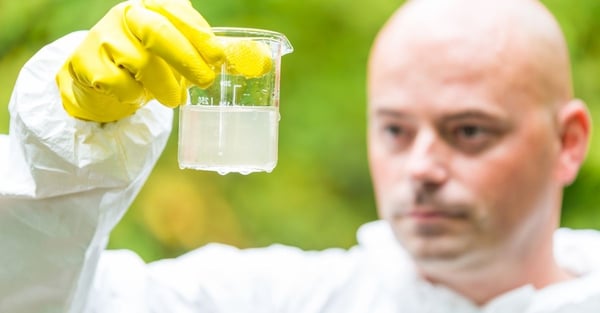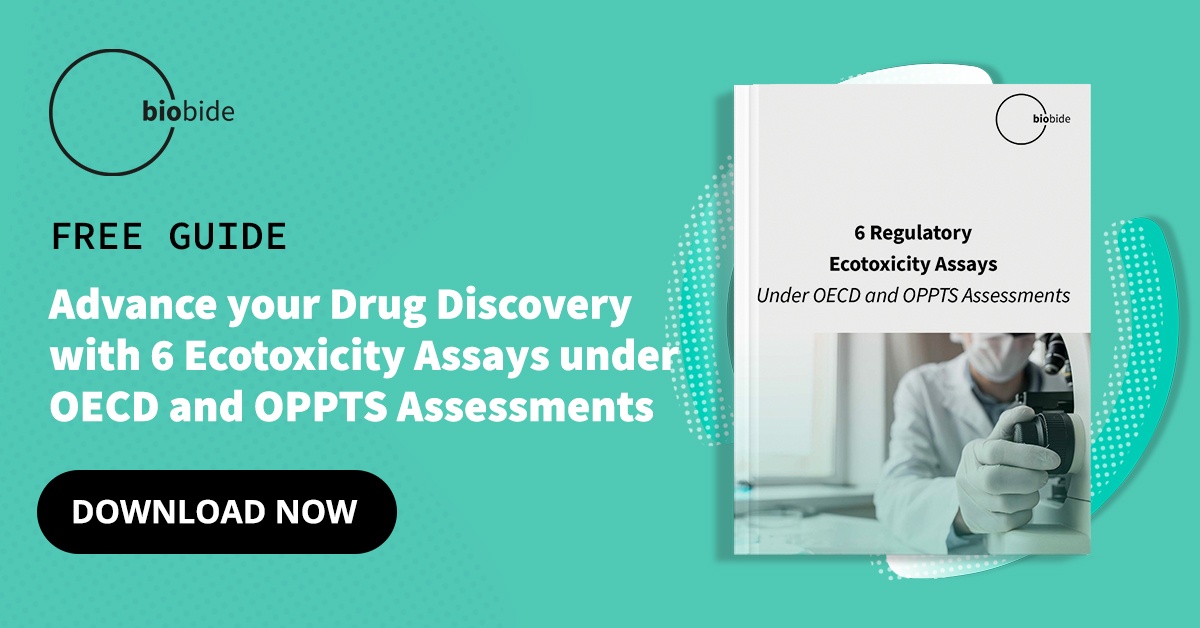It’s vitally important to identify any safety concerns for hits and chemicals in the early stages of Drug Discovery. Up to 80% of all compounds end up leading to dead ends when toxicity tests highlight potential danger for humans. Advancing past preclinical studies requires accurate results on toxicity.
The different tests and assays that ensure the toxicity, safety, and efficacy of a new drug can sometimes seem abstract. The newly found molecules and treatments are often refined in a sterile lab setting, but as a part of the biological system they are always connected to the environment.
However, the same environment that provides scientists and researchers with new medicines is also littered with toxins. Lead, arsenic, and bisphenol are all naturally occurring compounds that are harmful to humans.

Looking into these pollutants and environmental hazards is obviously important for the ecosystem at large, but there are also significant risks to the human body. A part of that bias can be seen in how many pollutants and environmental toxins are well documented in regards to their effect on nature, but with limited research into how they can cause diseases in humans.
Aquatic toxicity stands at the forefront of both the harmful effect of chemicals on the environment and on biological systems.
Zebrafish are an alternative animal model at the forefront of toxicology and are already widely used in aquatic toxicity research. The small fish have a proven track ready of verifiable and viable data on the effects of environmental hazards and how they are related to various diseases.
Defining Aquatic Toxicity
Aquatic toxicity commonly refers to the studies and tests that look into the effects of chemical substances on aquatic wildlife. The series of experiments are usually grouped into several categories, including trophic levels, time frames, and dose descriptors.
The trophic level refers to an organism’s position in the food web. Research into aquatic toxicity focuses on plants like algae for primary producers, invertebrate crustaceans like daphnia for primary consumers and secondary producers, and vertebrates like Zebrafish for secondary consumers.
Independent of the trophic level, aquatic toxicity studies are grouped into acute (short term, 24-96 hours) and chronic (long term, 7 or more days) criteria. The results are then described using technical terms like LC 50 (median lethal concentration) and EC 50 (median effective concentration).
Aquatic Trophic Levels
- Primary Producers – Algae
- Primary Consumers/Secondary Producers – Daphnia
- Secondary Consumers – Vertebrate Fish (Zebrafish)
As an example, researching acute toxicity to vertebrate fish exposes the animal model to concentrations of the potentially harmful chemical over a short period of time. The test is designed to continue until half of the subjects have deceased (LC 50), typically within 96 hours.
The specific definitions and qualifications help refine any information gathered from the tests and assays. How the different models react to the toxins and chemicals show how they could potentially lead to new diseases or otherwise be harmful to humans.
Choosing a specific model for testing aquatic toxicity depends on what exactly needs to be researched. The exact interactions between a toxin, its environment, and the living organism always need to be able to provide relevant and reliable data.
When applicable, relying on an alternative animal model like Zebrafish gives researchers access to an animal model with a long history and strong background in toxicology. Along with retaining high homology with humans, Zebrafish provide reliable controls, relevant comparable data, and proven procedures and protocols.
OECD Guidelines and Testing Aquatic Toxicity
There are over 100 tests for identifying potentially harmful chemicals and pollutants outlined by the OECD. The set of internationally agreed methods are most often associated with environmental safety measures around potentially harmful chemicals. However, the OECD guidelines also include useful information for researching new compounds during the early stages of Drug Discovery.
Following a global standard when defining the toxicity, safety, and efficacy of a new hit translates into an easier process when dealing with government regulations.
The OECD guidelines for testing chemicals include the Fish Embryo Acute Toxicity (FET) test and suggests using Zebrafish for the study. The FET test described in the OECD 236 guideline provides detailed steps for determining the LC 50 of a given chemical, observing a small number of embryos every 24 hours and noting any changes to the small fish eggs.
While very thorough and complete, the rigorous testing requires a large time commitment at a very early stage in Drug Discovery. With so many promising hits quickly being turned down after initial results show the potential for harmful effects, such a slow process is not always the best fit.
Biobide has taken the initiative to create a simplified version of the FET test that quickly assesses aquatic toxicity, better suiting the needs of early Drug Discovery.
For a more concrete example of why aquatic toxicity is so important, Endocrine-Disrupting Compounds are harmful compounds commonly found in nature. More specifically, Thyroid Hormone Disrupting Chemicals (TDCs) play a critical role in avoiding the correct development, reproduction, neurological and immune functions, and are increasingly important in early screening.
Biobide has also developed an efficient assay for screening TDCs with Zebrafish embryos as an alternative animal model. The quick and cost-effective assays can also be used to identify an array of other potential thyroid disrupting substances.
While specialized in Zebrafish, this test and its results have also been applied to other models, including algae and daphnia.
The OECD guidelines and ISO standards for testing aquatic toxicity are very thorough, but can be impractical for the fast pace of early Drug Discovery. Creating scaled-down versions of the internationally recognized methods allows for low test volumes that are more suitable for High-Throughput Screening.
Studying Aquatic Toxicity with Zebrafish
Researching aquatic toxicity requires looking into how new chemicals found in the environment could potentially harm humans. The three trophic levels, specific time frames, and dose descriptors are all important variables that need to be fully understood before a new treatment can begin the process of entering clinical trials.
Zebrafish are an alternative animal model for acute and chronic tests on aquatic toxicity. The vertebrate fish have a strong history in toxicology and are highly homologous to humans, sharing over 80% of their disease gene DNA. Zebrafish are a great source for information on how environmental toxins could potentially be harmful to humans.
The unique advantages that come with Zebrafish make them adapted to the quick pace needed for early Drug Discovery. Their short development cycle of hundreds of eggs in just a few days means experiments are relevant and highly repeatable.
With natural external fertilization and transparent embryos, Zebrafish provide an ethical and non-invasive window into aquatic toxicity.
Researching aquatic toxicity with Zebrafish not only helps identify and classify harmful hazards and chemicals, it also builds a better understanding of how those compounds affect the biological system.





